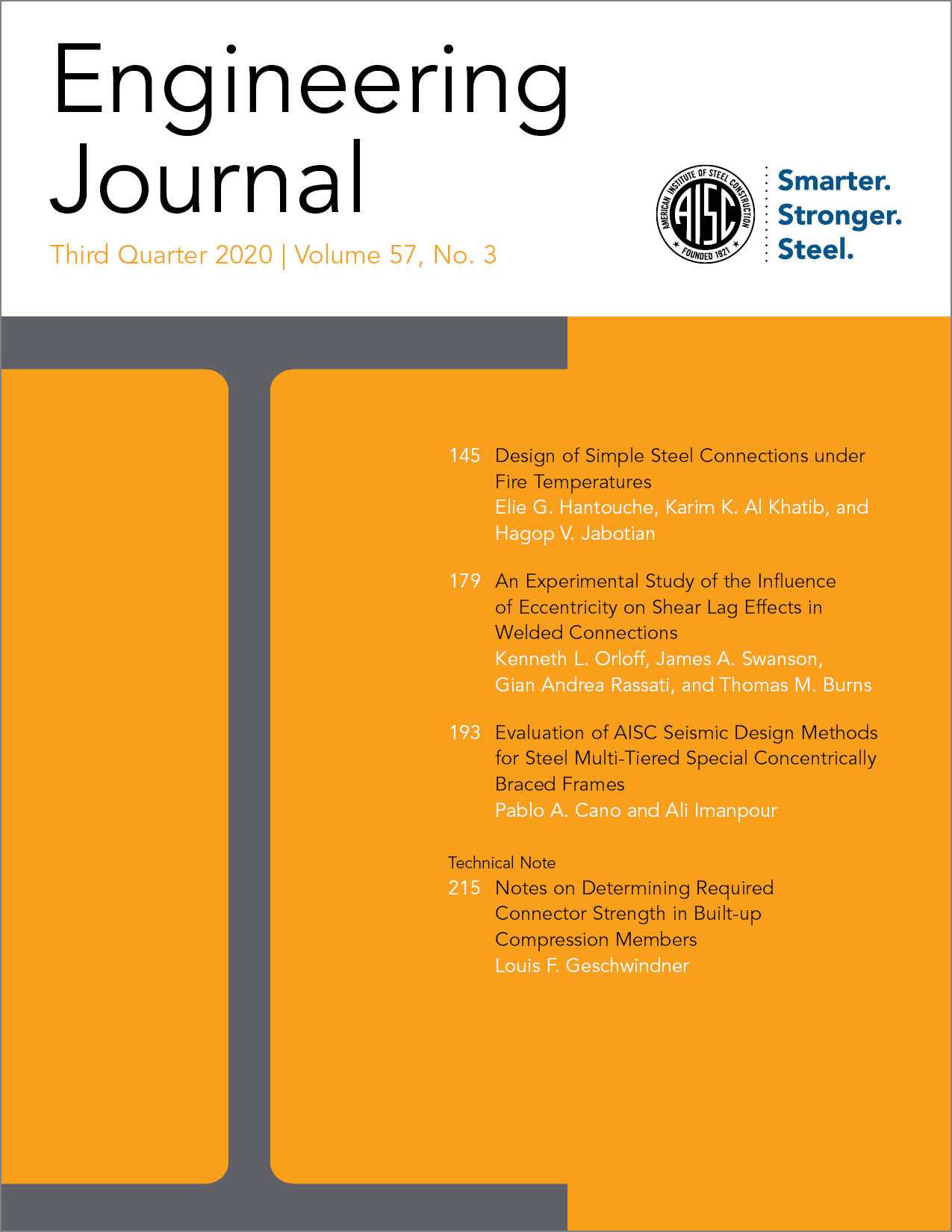Design of Simple Steel Connections under Fire Temperatures
DOI:
https://doi.org/10.62913/engj.v57i3.1168Keywords:
Stiffness-based model, steady-state temperature, fire, simple connections, fire designAbstract
A methodology is developed for designing simple steel connections (shear tab and double angle) subjected to fire. The proposed methodology is based on quantifying the strength and stiffness of steel framed simple connections at elevated temperatures. To achieve this, first, a stiffness-based model that characterizes the rotational stiffness of simple steel connections when subjected to fire temperatures is developed. The model is capable of predicting the behavior of two widely used simple steel connections (shear tab and double angle) when subjected to fire temperatures. It incorporates the connection rotation of key component elements and the nonlinear behavior of both bolts and base materials at elevated temperatures. The model is validated against experimental results available in the literature under steady-state temperature analysis. The model covers all possible limit states and governing failure modes under different loading and temperature conditions. It can be considered a practical tool for designing simple steel connections for professional structural fire engineers in the United States. Step-by-step design examples of simple steel connections in an isolated frame are provided to illustrate the incorporation of the developed stiffness model in a fire design procedure. The presented design procedure accounts for the additional load demand on the connection during fire. This includes the load demand due to thermal expansion and beam sagging.

